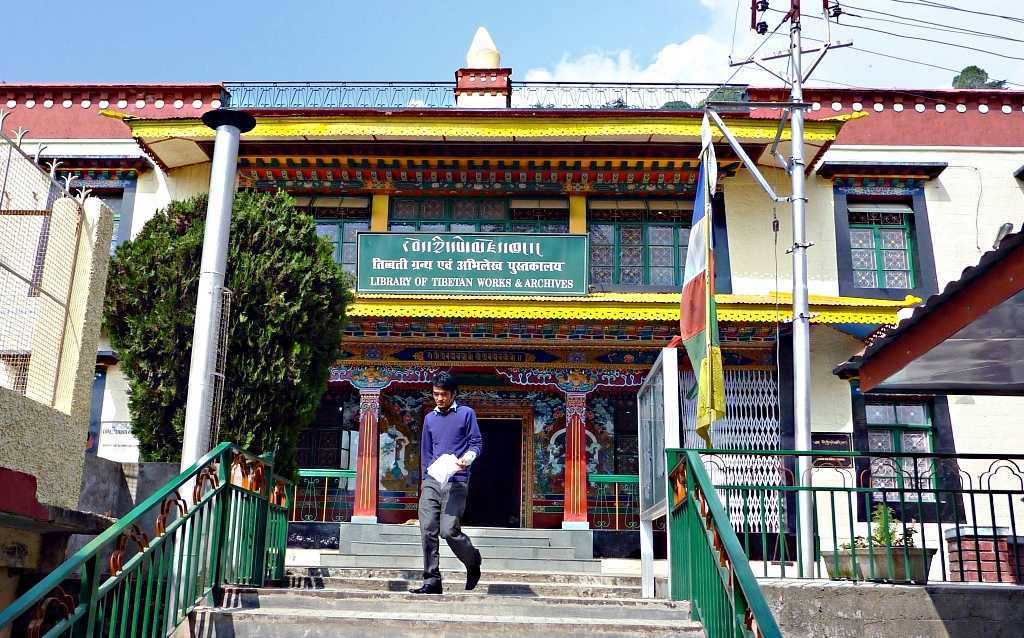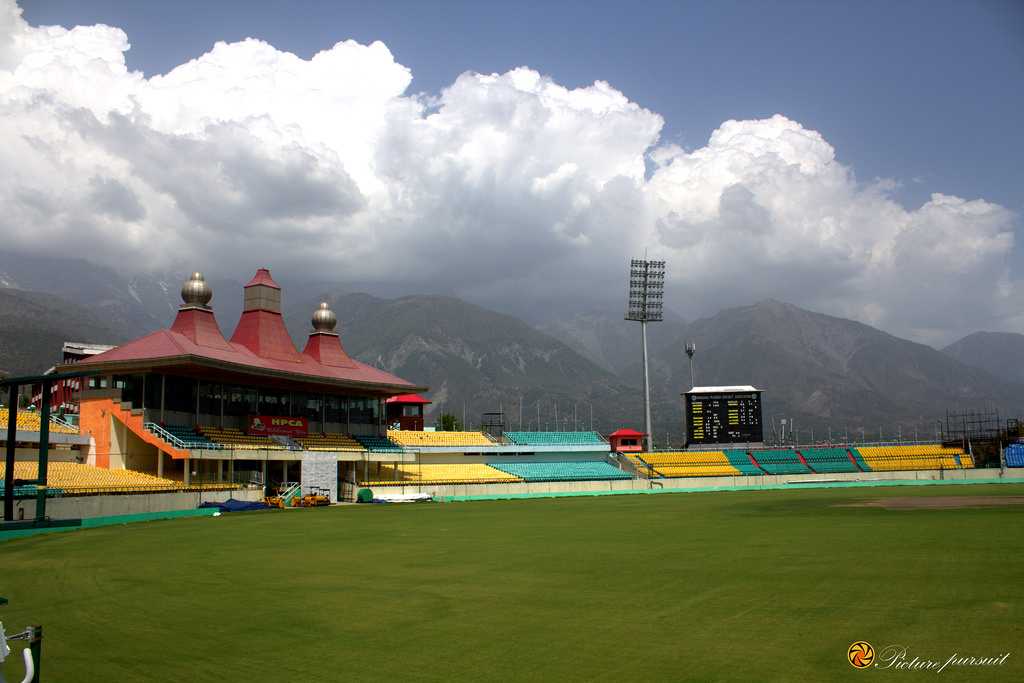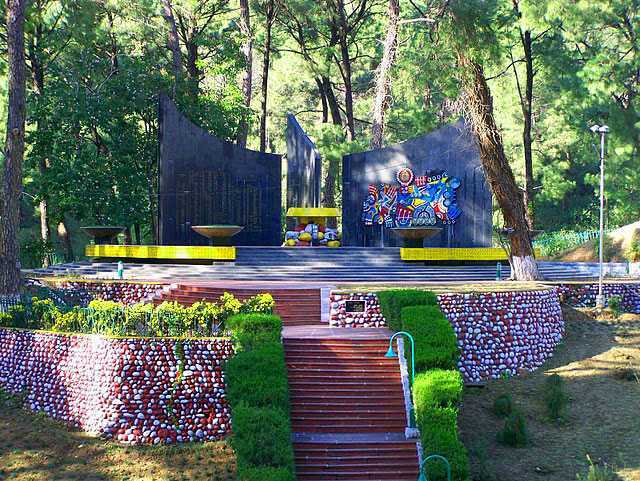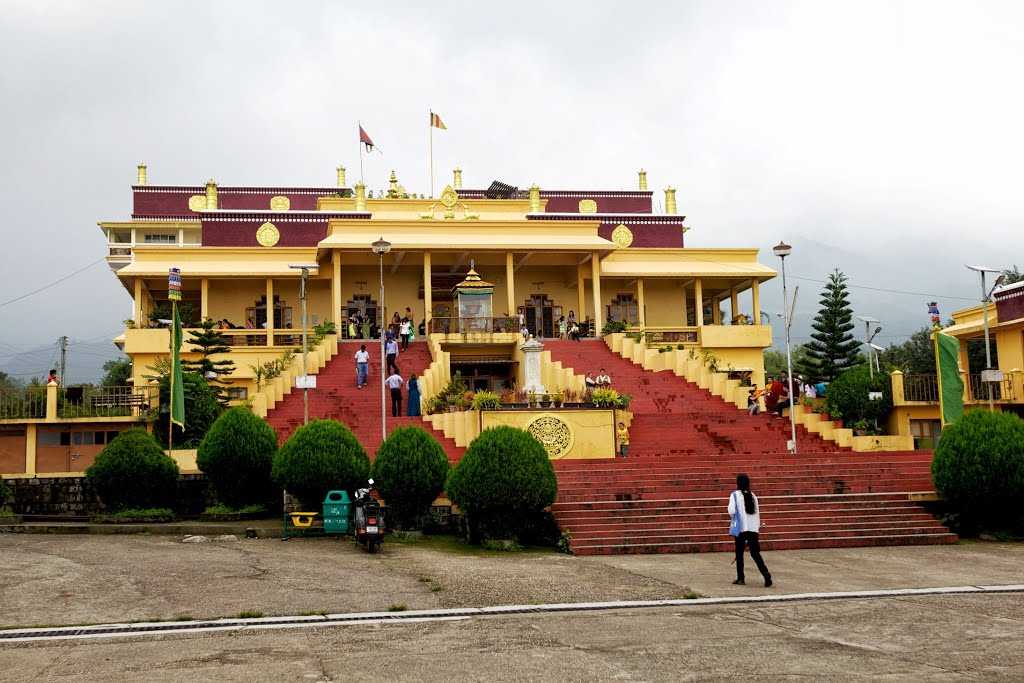1- Library of Tibetan Works and Archives

Library of Tibetan Works and Archives, Dharamshala Overview
With artifacts and manuscripts that date back to the 12th century, the Library of Tibetan Works and Archives is one the pioneering institutions in the study and research of Buddhism. With as many as 80,000 manuscripts, 600 Buddhist artifacts including beautifully crafted silk applique thangkas and a three dimensional, wood carved mandala of the Avalokiteshwara, one of the most revered and compassionate Bodhisattva in Buddhism. With an air of peace and serenity descending upon people who visit the museum, it is indeed a calming experience to visitors of this offbeat museum in India.
2- Dharamshala Cricket Stadium

Dharamshala Cricket Stadium, Dharamshala Overview
Nestled in the lap of the majestic Himalayan mountain range lies the quaint little Dharamshala Cricket Stadium. Located at the height of 1,457 meters above sea level, it is one of the highest sports grounds in the world. Visiting a cricket stadium while in Dharamshala may sound like a strange thing to add to one’s itinerary, but the magnificent natural backdrop and the cool winds constantly drifting across the grounds is what makes a trip to HPCA Stadium (as it is also known) worth it. Indigo skies, an eternal stream of the fresh mountain breeze, and the vast expanse of lush green field offer a sensory experience like no other. With a view comparable to the Adelaide Oval or Newlands, this stadium competes with the best in terms of its magnificence.
Operated under the auspices of Himachal Pradesh Cricket Association, the Cricket Stadium of Dharamshala situated amidst the Dhauladhar mountain range in Kangra valley often serves as the practice ground for the Indian Cricket Team, Himachal Pradesh state-level cricket team, as well as Indian Premier League (IPL) team Kings XI Punjab. It has several modern-day amenities for hosting national and international level cricket matches, with the capacity to seat a crowd of approximately 23,000. The atmosphere is fused with a serene Tibetan aura, as seen in the architectural style of the main stand. This would be an expected scenario, considering the stadium has been set up in Dharamshala, the Indian home of Dalai Lama.
Perhaps the best part of attending a match at the majestic Dharamshala Cricket Stadium would be that there is no fence in front of the seating area, providing an unobstructed view of the match. The administration is polite, and the area is quite well-maintained, which makes for a pleasant, hassle-free visit. A constant internal battle is what will tear you apart – shall I look at the mountains or the match? If you are simply visiting the attraction as part of an extended tour, you are in luck! The stadium is open for tourists even when no matches are scheduled, so do make sure to stop by and soak in the beauty.
3- Dharamshala International Film Festival
Dharamshala International Film Festival, Dharamshala Overview
One of the leading independent film festivals of the county is the Dharamshala Film Festival which is held every year in November. The festival is for both filmmakers and volunteers and also travellers from far and wide. Apart from being a celebration of art and strong independent cinema, the Dharamsala Film Festival also makes for the perfect break from Indian summers. Showcasing the best of Indian and international cinema, the DIFF provides a platform for hitherto unknown artists to take centre stage. With strong themes that resonate with the audience, this one's a not miss for film lovers.
Dharamshala Film Festival 2019 - Dates
4th November to 6th November 2019Venue of the Film Festival
Tibetan Children’s Village school, Dharamshala4- St. John in the Wilderness Church

St. John in the Wilderness Church, Dharamshala Overview
St. John in the Wilderness, built in 1852, is one of the most important churches in Himachal Pradesh. Located near Dharamshala and on the way to Mcleodganj, this neo-gothic church was built in dedication to John the Baptist. Set amidst lush deodar forests, this peaceful edifice is known for its Belgian stained-glass windows.
The eccentric church was built in dense woods which is why it is famous as 'St John in the Wilderness'. One of the oldest built structure of Dharamsala, this is also the final resting place of Lord Ergin, one of the governor generals and also viceroy of India during the British Raj. This St. John in the Wilderness Church should not be confused with the church of the same name located in Nainital, Uttarakhand.
5-War Memorial

War Memorial, Dharamshala Overview
The War Memorial in Dharamshala, seating ideally in the in forests of the hill town, is created to commemorate the memory of those who fought for saving our motherland. During the Indo-China War of 1947-48, 1962, 1965, and 1971, and UN Peace Operations, many brave soldiers of Kangra lost their lives as war heroes, and the War Memorial in Dharamshala, made of three huge panels of black stone (each 24 feet high), preserves their memory in stone.
The War Memorial is surrounded by poetic pine forests of Dharamshala, leading to the lush gardens through a quaint walkway. Look out for the names of the martyred soldiers etched on the stone panels. You can have some refreshments from the nearby cafe serving snacks, and visit the GPC college which is situated closeby.
6-Gyuto Monastery

Gyuto Monastery, Dharamshala Overview
Popularly known for the study of Tantric Meditation and Philosophy, the Gyuto Monastery is one of the beautiful and popular monasteries located in Dharamshala. It was founded in India in 1959 and was established for preserving and promoting the tradition of Black Magic, popularly known as Tantric Teachings, of the great teacher Ksongkhapa. The glorious monastery has helped in depicting how, unlike popular belief, black magic can be used for the well-being of the people.
The Gyuto Monastery is beautifully constructed on a hilltop with a commanding view of the Dhauladhar Ranges and the Beas River from there. A beautiful gold-plated statue of Lord Buddha is situated on the premises of the temple which glistens when the rays of the sun fall on it early morning. Plenty of tourists and Buddhists come to the resplendent Gyuto Monastery to witness the quiet and serene monastery which is one of the delights of Dharamshala.
